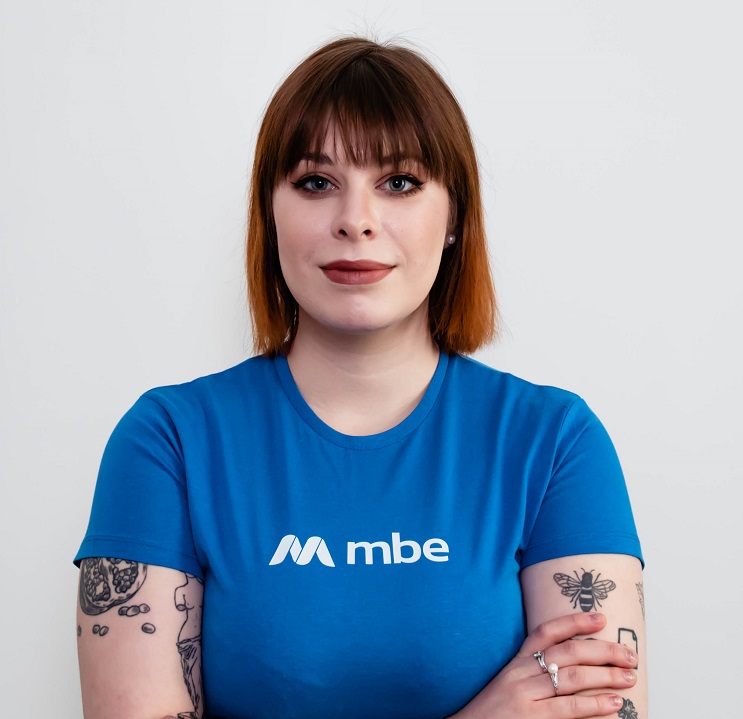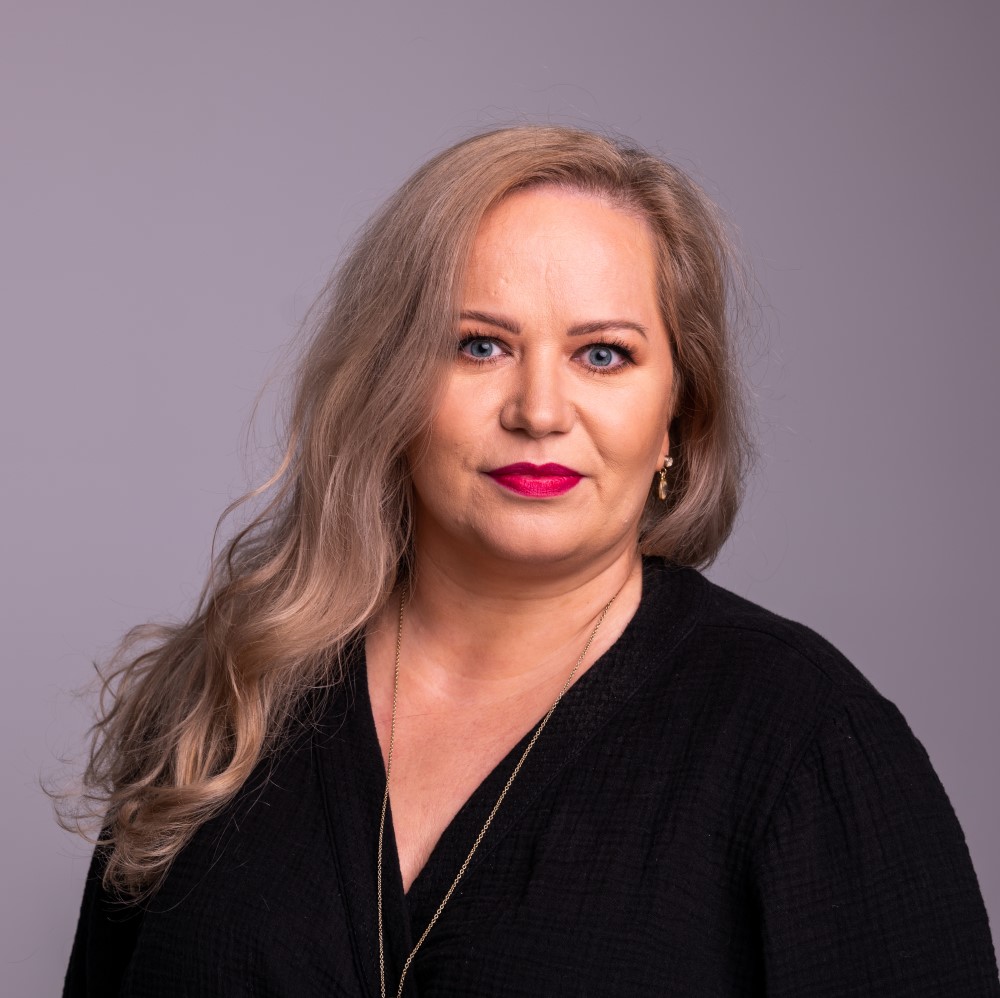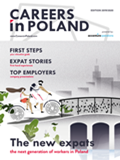Autism spectrum disorder, ADHD and the reality of building a culture of diversity and inclusion in an organization

Editor

related articles
Like ADHD, autism spectrum disorder is a neurodevelopmental condition, meaning a different than typical pattern of brain performance. It affects various areas of a person's functioning, including the emotional and social areas.
“Every person on the autism spectrum is different. They can have various needs and prefer to expresses in different ways. Like in society in general, no two individuals on the autism spectrum are the same. Certainly, it is possible to speak of common recurring traits, although these, too, become apparent in everyone in different ways.
As a person living both on the autism and ADHD spectrum, I usually find that the way I think or communicate is not necessarily quick to comprehend or desired. It is not uncommon for it to be considered inappropriate or, at the very least, strange. An example of this otherness is being open and straightforward – I cut to the chase quickly and I am no good at small talks at all.” says Ela.
“A sizable portion of people who are on the autism or ADHD spectrum are highly sensory-sensitive. It is worth noting this in the context of work, and respecting that they may be disturbed by brigh lights, sounds, or smells. An essential aspect is the way we interpret and process information, which can differ between typical and atypical people. Many of us also like established patterns of action, a degree of repetition," she explains.
Wiktoria: What challenges do neuroatypical people face in the labor market?
Ela: At times, neuroatypical people have many concerns about how they will find their way in a new place and whether they will be well received and accepted for their differences. Insecurity in these aspects accompanies us all our lives, so many neuroatypical people mask their otherness to fit into the typical environment and standard expectations. Unfortunately, this has its consequences. Masking is a very demanding and depleting strategy that sucks an enormous amount of energy and emotion out of a person. Such a person then has to be on the alert all the time to adopt the expected pattern of behavior, giving up all spontaneity and their natural reactions, in other words, concealing their very self.
Pretending to be someone else for the sake of fitting in with the established "normality" comes at the expense of our well-being.
In addition to this, it is sometimes the case that people on the autism spectrum are afraid of the label of "autist-at-work" sticking to them.
W: What are the common stereotypes and misconceptions about people on the autism spectrum?
E: People, whether on the autism or ADHD spectrum, are usually judged in terms of commonly held beliefs in society. These beliefs are simplifications and stereotypes.
Thus, in the context of the workplace, the ‘autist-at-work’ label is nothing more than a stereotypical perception of a person on the autism spectrum as an individual with outstanding analytical and logical skills, who has difficulty with interpersonal communication, but who is great in the IT world and will do well in a programming position.
Autism spectrum, ADHD, and any other disorder do not determine your competence. It is only a specific set of characteristics that make you unique.
W: Is it possible to conduct an inclusive recruitment for a company? One that doesn't eliminate a candidate's otherness at the very beginning?
E: Of course. It is worth stating in the recruitment ad itself that you are willing to make this hiring tailored to the needs of the candidates. You can start by adding a questionnaire, in which the interested person chooses how to go through the stages of the recruitment process and has space to post some additional comments or questions.
Some people prefer to be recruited remotely, while others are distracted by a camera on during online interviews. A recruitment questionnaire attached to the ad will be a helpful hint to the recruiter and will signal to those interested in working for the company that it pays attention to the different needs of candidates, and is willing to adjust.
Equally important is the information contained in the ad, which should be detailed, specific enough not to leave unnecessary ambiguity. The entire recruitment process should be described from start to finish, with the applicable deadlines, the places where you need to appear or the documents that the employer must receive from you. On top of this, the visual aspect of the ad is important. It is worth ensuring that the composition of the text is clear.
A recruitment ad is supposed to encourage - not reject and raise doubts.
W: The basis for creating an inclusive work environment is communication. Can you share some best practices in this regard?
E: The foundation of good communication in a company is a constant human-centered approach. Listen, ask, try to understand, be willing to consider different needs and seek appropriate solutions. An open mind is the key to effective and inclusive communication.
In addition, transparency in communication plays a key role. It is worthwhile to provide clear, specific messages and provide constant feedback to those working.
It is important to know that communication in a company allows for the comfort of the people who work there. Each of us is different, but every now and then we all find ourselves in a new personal or professional context, which entails various expectations. That is why creating a space in the organization where you can freely address your needs and talk about your challenges is so important.
Celebrating diversity is not enough. An inclusive culture in a company means constantly leveling the playing field for everyone, and adjusting it as we go.
W: An inclusive, and therefore non-exclusionary business. How to build it?
E: There are no universal guidelines in this regard. It is necessary to start from the basics, that is, from the attitude of a person as an individual, which is formed by many components.
Intersectionality is complex, and that presents a challenge, but it is impossible to overlook it. A myriad of aspects influence who we are now and what our capabilities are: our place of birth, socio-economic situation, gender, accessibility to education, life experiences, but also our current position in society, caregiving responsibilities, material status, ethnicity and a host of other dimensions that change over time. Underpinning our conversation is neurodiversity, which assumes that each of us perceives and processes reality differently - some do so in more typical ways, others less so.
Taking all this into account, I wonder why we tend to either put everyone into some one-size-fits-all framework or to take shortcuts, basing our assessments and actions on stereotypes.
In my opinion, it is crucial to establish mutual expectations between employee and employer, also for the way they communicate.. Asking about one's preferences, limitations, but also strategies for acting in different situations creates room for true openness. Ensuring everyone has time and available solutions to learn how to conduct inclusive conversation, helps respects and cherish other’s diversity.
An inclusive enterprise seeks solutions to realize the full potential of the talent available in the organization.
First, it opens itself up to diversity in the recruitment process, then it continuously recognizes the capabilities of the employees, as well as what they might require to make things happen. Next, it provides the necessary tailored tools. Crucially, all this should be done in an atmosphere of full acceptance and understanding that everyone is unique, and has access to equitable opportunities.
Some people prefer to work remotely, some prefer hybrid work, and others feel comfortable in the office. The important thing is to provide workers with a variety of options. This includes flexibility of working hours, however, this does not simply mean designating an hourly range in which to begin one's working day. Not just a person with ADHD or on the autism spectrum, but any employee may need an extended break during the day to recuperate and return refreshed to their duties. Talking about this is essential, as it affects the psychophysical comfort of employees, their health and the efficiency of their work.
W: Is NatWest an inclusive and supportive place for everyone?
E: Definitely, the company where I’ve been working for 17 years now, is such a place.
We’re tackling inequality head on, wherever we can. Our business needs to reflect the communities we serve, so that we can cater to them to the best of our ability. That means providing more support to the people that need us and designing accessible services. It means working with diverse suppliers who breathe equity and inclusion in their day-to-day. It means building a culture where everyone has the opportunity to succeed. And, crucially, it means listening to and engaging with difference. Because if we do that, we are creating something really remarkable. We’re doing this because we know it’s right. We will stand up for people who are excluded, remove barriers that stop people progressing in their career and create a safe, happy and healthy environment for all. This is deep rooted, core to who we are and our purpose and values as a bank. We want to give everyone who works here, and every customer who comes into contact with us, the chance to succeed and the support to thrive. And until that’s everyone’s lived experience, we’ll work to make it a reality.
To build such a place, one must realize that it is a process, not a one-time action. A culture of inclusion and diversity requires constant receptivity to change. It's impossible to create it at once and then relax our vigilance
W: Ela, thank you for the interview!
in collaboration with

Ela Bonda, NatWest Group Poland
Head of DEI & Productivity
Ela has over 20 years of experience in global finance, from 17 years in NatWest. Since 2013 leading supporting functions for Poland businesses and making an active part in global projects.
Since October 2017 Ela’s focus is on Property & Workplace agenda with aim of creating a truly versatile working experience for NatWest colleagues. She also takes care of Supply Chain Services, responsible for the end-to-end management of the supply base and surrounding processes for Poland and EMEA
NatWest Poland’s Diversity & Inclusion Lead since January 2019, embracing the work of all diversity’s lenses and delivering strategic inclusion goals. Ela is a member of NatWest Poland’s leadership team.
Founder of NatWest Women Network Poland, valued corporate social responsibility leader and diversity supporter, she also acts as a mentor in many various projects.
Speaker and expert panelist at dozens of local and international conferences.
Co-host of the podcast “My friend depression” where she tries to normalize mental health issues. Proudly neurodivergent.
Alumna of postgraduate studies for Diversity & Inclusion Management at Cornell University, and Oxford’s Leading Sustainable Corporations Program.
Awarded in Responsible Business Forum’s bi-annual ‘People that change the business’ in 2021 in two categories, “Business” and “Diversity Management”.
Founder member of the association “Closer to ADHD”, aimed at education on neuroinclusion.












